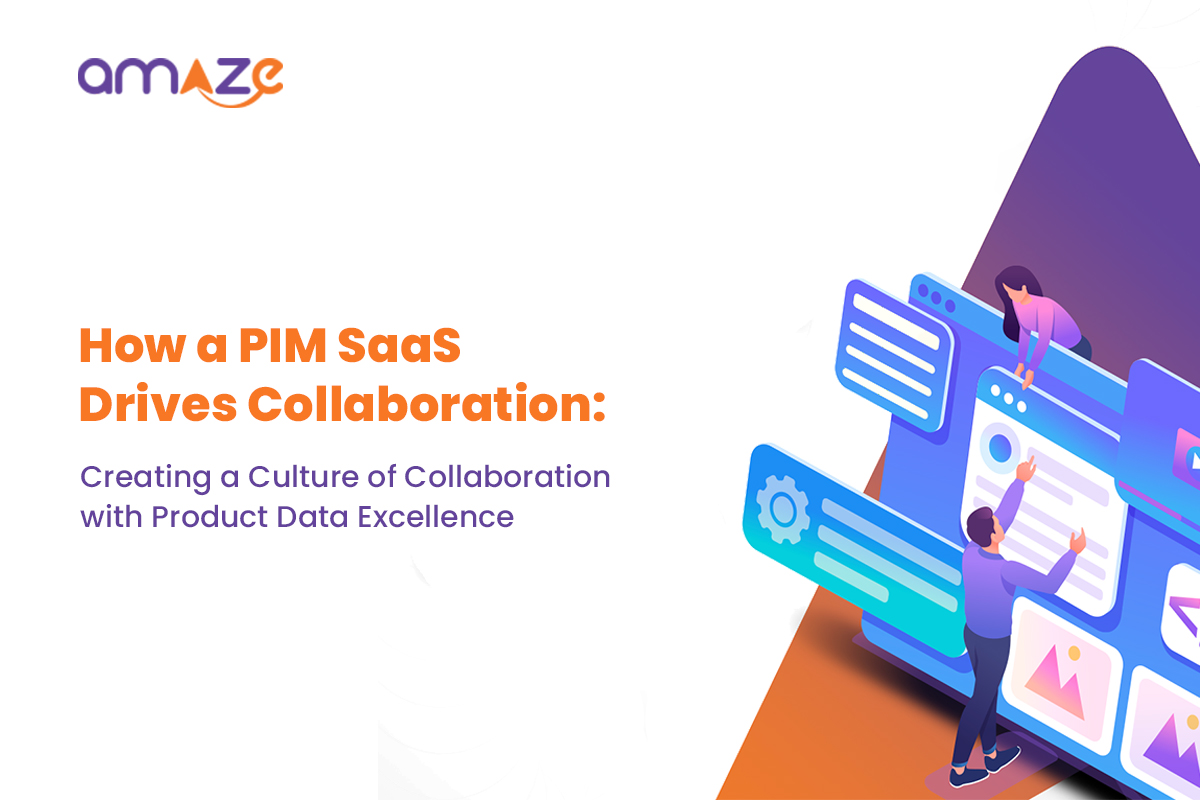How a PIM SaaS Drives Collaboration:Creating a Culture of Collaboration with Product Data Excellence

The typical “workspace” is in flux. The idea of a team sharing the same physical space to drive productivity is quickly losing steam. The number of people working hybrid was understandably higher since the pandemic hit. However, this trend is expected to plateau at a peculiarly higher percentage even as we return to normalcy.
According to a Statista survey, the percentage of people working remotely before the COVID-19 pandemic was 16%. While this number peaked at 74% during lockdowns, the percentage of employees that will be working hybrid permanently has now gone up to 36%.
The relevance of “collaboration” is not restricted to homogenous teams though. Collaboration between departments (sales with marketing, marketing with merchandising etc.) is just as important. And we’ve not even spoken about other partners and stakeholders yet. Just as the workspace is undergoing a massive tectonic shift, so are larger organizational associations with partners and stakeholders. The relationship between manufacturers, suppliers, distributors, retailers etc. are all shifting, thanks to the skyrocketing rate of innovation.
Here’s why collaboration is key for success in digital commerce
- An improvement in both, output, and quality from team members
- Collaboration leads to innovation and new ideas
- It helps improve efficiency and productivity, and reduce time-to-market
- It fosters an environment of knowledge sharing
- It incentivizes further teamwork
PIM SaaS at the core of Collaboration
Enterprise spending on Cloud and SaaS infrastructure stands at USD 178 billion as of August, 2022 (Statista).
But that’s the thing about PIM SaaS. It’s more than a project management or collaboration tool that connects teams together. It empowers teams with a mix of product data excellence, high visibility and transparency, workflow control and analytics to come together to power the organization’s growth. The same stands for partners and stakeholders as well
So what is it that makes PIM SaaS so relevant to collaboration?
A Solution to the “Hybrid” Challenge
In a classic chicken or egg scenario, it’s hard to tell what came first, hybrid work or SaaS and cloud solutions. However, one thing is clear. PIM SaaS has gone a long way in solving the hybrid work vs. team cohesiveness and collaboration challenge. Businesses no longer need to worry about sky-high costs of physical infrastructure. Since the software is on the cloud, all teams need is access to the internet and they’re good to go. With PIM SaaS not located on any particular physical infrastructure, teams and stakeholders have the freedom to collaborate on product data anytime, anywhere. This drives product data availability across the value chain – from inbound logistics to sales and marketing.
Driving Trust with Data Resilience
Different teams within an organization have varying challenges. Some might be concerned about updating product attributes, specification sheets, data files etc., while others would be more concerned about the time-to-market that gives the company the competitive edge. However, the truth of the matter is that these, and many other aspects are closely connected and heavily reliant on product data.
By creating a single, reliable, and up-to-date source of truth, PIM SaaS gives teams a centralized source of truth. Whether its merchandising, sales, marketing or any other team, a good PIM system eliminates back and forth, and gives teams the confidence of working with accurate and current data. With consistently reliable product data delivered over time, teams begin to trust, not just the data, but data stewards as well. This enables teams to be more decisive with their decision making and eventually, leads to customers developing a sense of trust as well.
PIM SaaS as a Collaboration Platform
“Communication is at the heart of eCommerce and community” – Meg Whitman, Former President and CEO of Hewlett Packard.
PIM SaaS drives collaboration in key businesses areas, not just with high quality data, but with complete control over process flow as well. This doesn’t necessarily require a dedicated collaboration software if you have the right PIM on hand. Choose the right PIM SaaS, and you have the advantage of not just getting top-of-the-line product data management , but also visibility and control over the workflow. PIM gives you a centralized view of the process workflow, allowing you to designate tasks in a process, control access to data at various touchpoints, run validation rules, and track changes, all from a centralized location.
For example, if someone from the sales team gets a new lead, they can easily notify marketing in the system. Similarly, marketing teams can collaborate with copywriters, designers and other content creators to put together a PDP that best reflects the product in its most current form. Again, product data can be easily shared with internal and external teams without having to worry about data integrity or leaks. Role-based access can be leveraged to share data with multiple stakeholders, while still regulating access to maintain data integrity. Again, with governance rules and validation mechanisms in place, PIM SaaS also throws the required red flags when something is out of order.
It Costs Nothing to Collaborate
While legacy PIM systems had costs associated with every added feature, it’s not the same with modern day PIM SaaS systems. Whether you have a team of 10 or 100, it doesn’t demand additional infra to add new users. These tools have everything you need to drive collaboration, and they come with the required guidance as well. Not every team is as tech-savvy when it comes to PIM systems. However, with the right PIM SaaS, you get an intuitive interface that is easy to use and understand. More importantly, you also get the required training and support to ensure that your teams make the most of the SaaS, whether it’s process flow or collaboration.
At the end of the day, collaboration is not something that can be driven solely by technology; it must be a product of a culture.
And while a PIM system may not drive a culture of collaboration directly, it lays the foundation for the same with trust and efficiency that comes from reliable product data and absolute control over process flows.
Wondering where to start with on your PIM journey? Speak to our data experts at Amaze PXM for an in-depth take on PIM, and how it can drive a culture of collaboration in and across your organization ecosystem.
Related Articles
Recent Post
Categories





